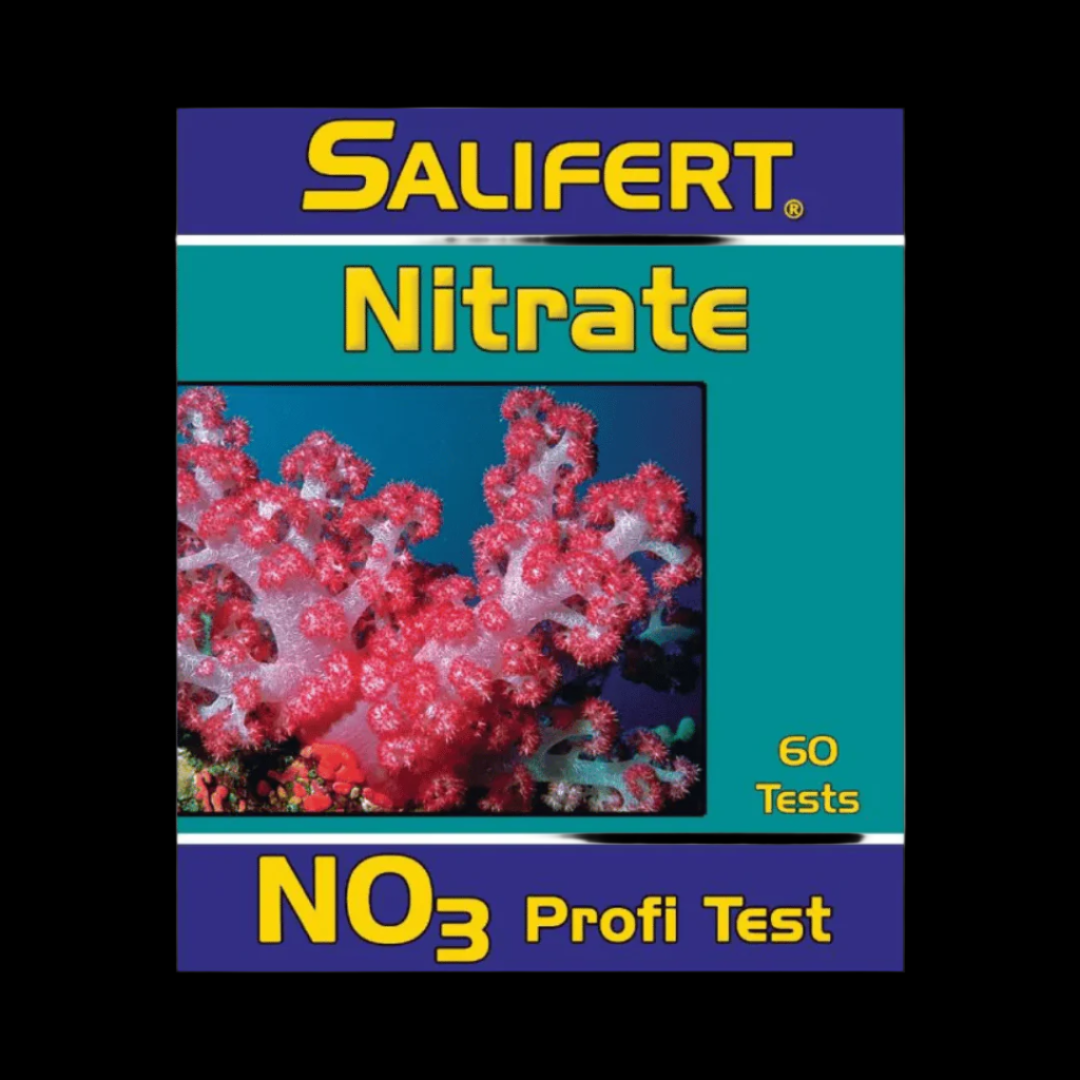Salifert
Salifert Nitrate Profi-Test Kit
Salifert Nitrate Profi-Test Kit
Couldn't load pickup availability
When an aquarium has insufficient regions deprived of oxygen (= anaerobic zones) or denitrification proceeds incompletely then nitrate will build-up.
A too high nitrate concentration can result in unwanted algae-growth and these might irritate corals in their neighborhood.
Nitrate as such also retards coral growth.
The nitrate concentration in a proper functioning reef aquarium should preferably be lower than 1 mg/L. Fish-only aquariums would usually show much higher nitrate concentrations.
Most test kits use a procedure in which a certain part of nitrate is converted chemically into nitrite and is measured as such.
Once again, just as with nitrite testing, amine interference has a major impact on the measured value. If such an interference occurs concentrations much lower than actual will be measured.
Many nitrate test kits are prone to amine interference. This can give results much lower than actual.
The Salifert nitrate test does not suffer from such an amine interference. The very special ingredients allow a very fast and precise measurement.
The range spans from very low to a very high nitrate concentration (approx. 0.05 – 20 mg/L as Nitrate-Nitrogen or 0.2 – 100 mg/L as nitrate ion).
The kit can perform approx. 60 measurements.
Initial Care Instructions
Initial Care Instructions
Once your coral arrives, float the sealed bag in your aquarium for 15–20 minutes to equalize temperature. Then, begin a drip acclimation process or slowly add small amounts of tank water to the bag every 5 minutes over 30–45 minutes.
2. Inspect and Dip:
Before placing the coral in your tank, inspect it for pests or hitchhikers. We strongly recommend using a coral dip solution to remove potential parasites or algae. Follow the dip instructions carefully and rinse with clean saltwater before introducing to your display.
3. Placement:
Start the coral in a low to moderate light and flow area to help reduce stress. Over the next week, gradually move it to its ideal lighting and flow conditions based on species needs.
4. Monitor Water Parameters:
Ensure stable water parameters (alkalinity, calcium, magnesium, salinity, etc.) and maintain good tank flow. Watch closely for signs of stress or tissue recession and adjust placement if necessary.
5. Patience Pays Off:
Corals often take a few days to fully open up after shipping. Give them time to adjust—avoid sudden lighting changes or overhandling during this period.
Shipping
Shipping
1.Shipping
- FREE Shipping for orders over $200
- If under $200 Shipping will be calculated at checkout.
- We will not ship outside of the contiguous United States
- We do not ship on U.S. national holidays or the day before
- We do not ship on Fridays for Saturday delivery
- Live animals are only shipped Next Day Air
- We do not ship when weather is forecasted that might affect delivery times in affected regions.
DOA Policy
DOA Policy
DOA Policy
If your livestock arrives unalived, please contact us within 2 hours of the delivery. We require images of fish or coral. Once the claim is approved, we will ship a replacement or apply a credit to your account.
Returns & Cancellations
Returns & Cancellations
We do not accept Returns or Cancellations
Share


